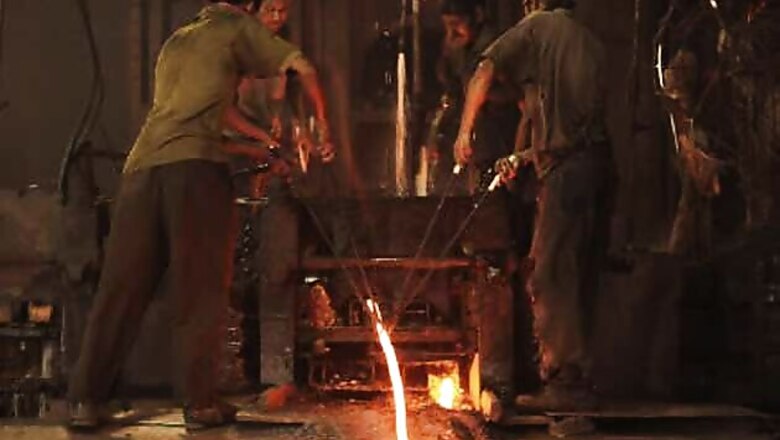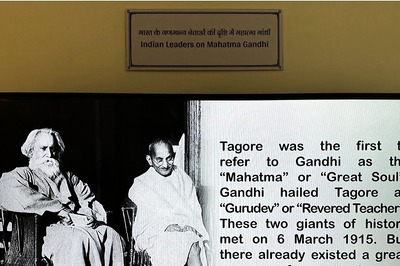
views
New Delhi: The Index of Industrial Production growth dipped to 0.1 per cent in July, as compared to 3.7 per cent in the same month last year. The July IIP growth was, however, better than the June IIP growth that remained unchanged at -1.8 per cent.
The manufacturing growth fell to -0.2 per cent versus 3.1 per cent in July 2011. The mining sector growth also fell to -0.7 per cent from 0.7 on a Year-on-Year basis.
The electricity sector growth stood at 2.8 per cent versus 13.1 per cent in July 2011.
Wednesday's data also provided an insight into the economy's performance in the quarter to end-September. The economy has grown 5.5 per cent or less in the last two quarters, a far cry from the 7-8 per cent growth seen in the preceding period.
But inflationary worries mean the central bank has resisted lowering interest rates despite the sharp slowdown.
The Reserve Bank of India is widely expected to leave its key lending rates steady when it reviews its monetary policy on Monday, in sharp contrast to many other G20 central banks that have been easing conditions to support growth.
"The data highlights structural weaknesses of the economy, with poor domestic demand amid political gridlock and contracting exports," said Dariusz Kowalczyk, senior strategist at Credit Agricole CIB in Hong Kong.
"It may lead to renewed expectations of a rate cut this month, although we believe that the odds still favour the RBI to stay put."
Graphic: IIP, exports
Indian markets showed little reaction after the data. India's 10-year benchmark bond yield fell around 1 basis point to 8.18 per cent from levels before the data, trading flat from its previous close.
The rupee held on to its earlier gains after the output data, trading at 55.24/25 versus its 55.34/35 close on Tuesday, while the Sensex also retained its gains, trading up 0.5 per cent.
Slowdown starting to bite
The latest economic report offers little respite for Prime Minister Singh as he struggles to escape the aftermath of corruption scandals that have undermined his authority to push ahead with bold and politically unpalatable economic reforms.
"I don't think the Reserve Bank of India would change its stance going by today's factory output reading," said Rupa Rege Nitsure, chief economist at Bank Of Baroda In Mumbai.
"India's problems are primarily structural and require structural solutions."
Underlining the challenges facing the government, HSBC on Wednesday downgraded Indian stocks to "underweight" from "neutral", citing the government's lack of progress in fiscal or structural reform as one factor in its decision.
With the economic slowdown beginning to bite India's middle class, Singh faces the uphill task of reviving the economy before his government faces the polls in a series of state elections starting this year and leading up to a general election in 2014.
Manufacturing, which accounts for the bulk of industrial production and contributes about 15 per cent to overall GDP, contracted 0.2 per cent in July from a year earlier compared with a contraction of 3.1 per cent a month ago.
The sector is battling weak demand in both overseas and domestic markets. Annual merchandise exports have fallen in four of the last five months, while domestic car sales posted their first annual decline in 10 months in August.
With the manufacturing Purchasing Managers' Index (PMI) easing to a nine-month low in August, the outlook for the sector does not look promising.
Capital investment in the economy grew a meagre 0.7 per cent in the second quarter of 2012 from a year earlier. Capital goods output, a key investment indicator, shrank an annual 5 per cent in July. It has grown only once in the past 11 months.
(With additional information from Reuters)




















Comments
0 comment